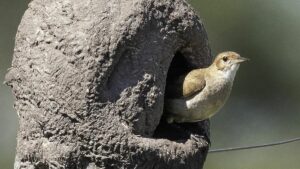It wasn’t its size or strength that made the ovenbird the national animal of Argentina. It was its hardworking nature, its proximity to daily life, and its ingenious way of living that turned it into a symbol of effort, perseverance, and connection to the land.
Present in much of the country, the ovenbird managed to earn a special place in the national fauna for more than just its song. Its selection as an emblem responds to popular admiration for this hardworking bird, capable of creating nests that are true works of natural engineering using only mud and its beak.
Its exemplary behavior, its life as a couple, and its ease of adaptation to both urban and rural environments make it a regular neighbor to millions of Argentines, who find in its figure a reflection of dedication and tenacity.

A symbol of identity and sustainability
The ovenbird (Furnarius rufus) not only builds with mud, but also with patience. Its nest, similar to a mud oven —hence its name—, is resistant, thermal, and ecological. These structures not only serve as shelter, but are also reused by other species, thus promoting local biodiversity.
It lives as a couple for life, reinforcing its image as a cooperative and organized bird. In addition, by feeding mainly on ground insects, the ovenbird contributes to the balance of ecosystems without the need for human intervention.

Curious facts about the ovenbird and its conservation
- Natural engineer: Its nest takes between 15 and 20 days to build and can weigh up to 5 kg. It is designed with a curved entrance that prevents predators from entering and maintains a stable internal temperature.
- Sings in duet: Male and female emit simultaneous trills that complement each other, reinforcing their bond as a couple.
- Conservation status: Fortunately, the ovenbird is not in danger. It is an abundant and adapted species in various environments, making it an example of successful coexistence between nature and human development.
- Respected bird: It was declared National Bird in 1928 by a contest organized by the magazine El Hogar, and officially recognized by the National Executive Power in 1985.
Source: Diario Uno.

